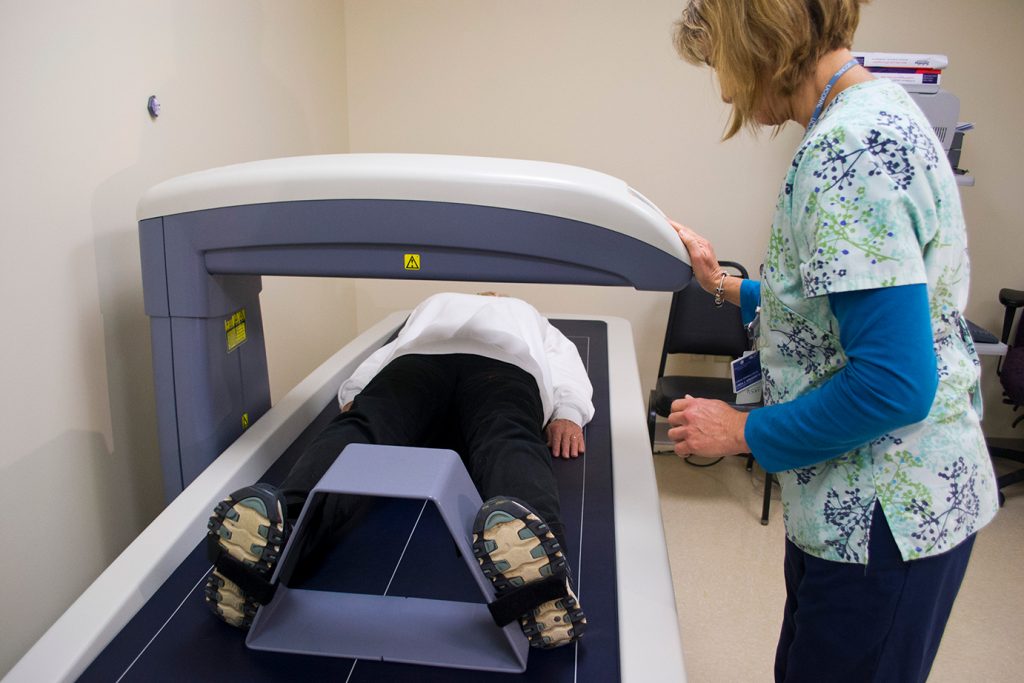Strong and healthy bones are essential for overall well-being, especially as we age. Osteoporosis is a condition with symptoms like weakened and brittle bones. It affects millions of people worldwide. Bone density testing detects Osteoporosis early on. It is a simple and non-invasive procedure offered by our radiology imaging service.
What is Bone Density Testing?
Bone density testing is a painless and non-invasive medical procedure. It is used to measure the mineral in your bones. The tests look for your bones’ density, strength, and overall health. It can diagnose osteoporosis and osteopenia. The results from bone density testing help expert radiologists develop personalized treatment plans.
Who is Eligible for Bone Density Testing?
Bone density testing is for individuals who are at risk of developing osteoporosis. If you fall into any of the following categories, you’re eligible for the test:
-
- Women over the age of 65:
Women are at a higher risk of developing osteoporosis, particularly after menopause.
-
- Men over 70:
Although less common, osteoporosis affects men as they age.
-
- Individuals with a family history of osteoporosis:
If your parents or siblings have osteoporosis, you may have an increased risk.
-
- Those who have experienced a fragility fracture:
A fragility fracture from a minor fall may indicate weakened bones.
-
- Individuals taking medications such as steroids:
Certain medications can contribute to bone loss. Regular bone density testing helps monitor their effects.
How is Bone Density Testing Performed?
Bone density testing is performed using a dual-energy X-ray (DXA) scanner. This machine uses low-dose X-rays to measure the mineral density in specific areas. Such as the hip, spine, or forearm.
Here’s what you can expect during the procedure:
1. Preparation:
On the test day, wear loose, comfortable clothing and avoid wearing clothes with metal zippers or buttons.
2. The Test:
You will lie down on an examination table. While the DXA scanner passes over your body, emitting low-dose X-rays. The procedure is painless.
3. Duration:
The test typically takes around 15 minutes, depending on the areas being examined.
4. Radiation Exposure:
DXA scanners use very low levels of radiation. To make them safe for most individuals.
Results of Bone Testing
Results are presented as T-scores and Z-scores:
1. T-Score:
T-score compares your bone density with that of a healthy young adult of the same sex. A score of -1 is considered normal. While a T-score between -1 and -2.5 indicates osteopenia and a T-score of -2.5 or below suggests osteoporosis.
2. Z-Score: This score compares your bone density with individuals of the same age and sex as you.
If your Z-score is significantly lower than expected, It may be necessary to look further.
What Can I Do to Prevent Osteoporosis?
There are several things you can do to prevent osteoporosis, including:
- Get enough calcium and vitamin D
- Exercise regularly
- Don’t smoke
- Limit alcohol intake
- Maintain a healthy weight
Bone density testing non-invasive procedure that detects osteoporosis. If you are at risk for osteoporosis, talk to your doctor about getting tested. Early diagnosis and treatment improve your quality of life.
If you think you need a bone density test, please contact our office today to schedule an appointment. Our experts will listen and let you know If you need a bone density test. If you need one, we will take good care of you.



